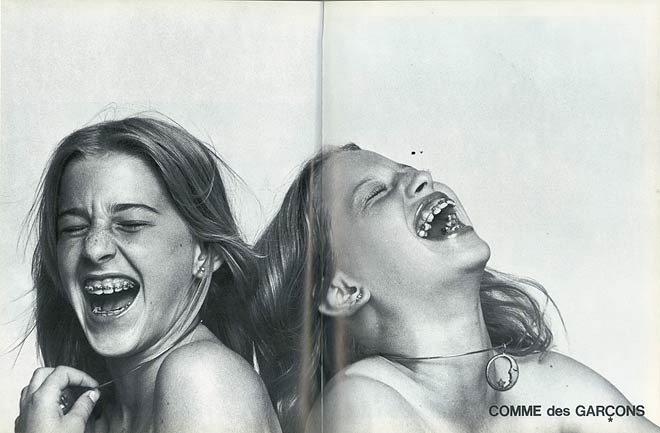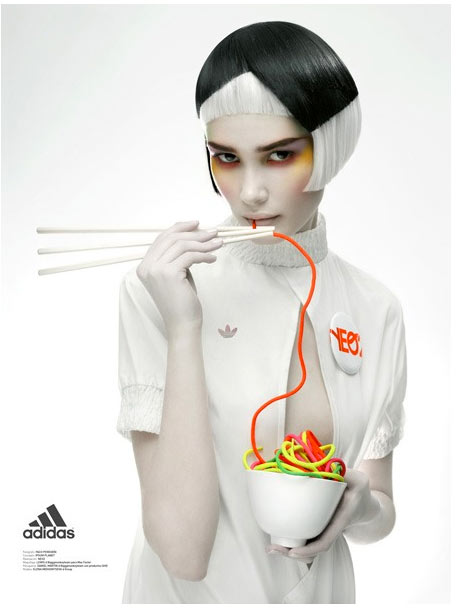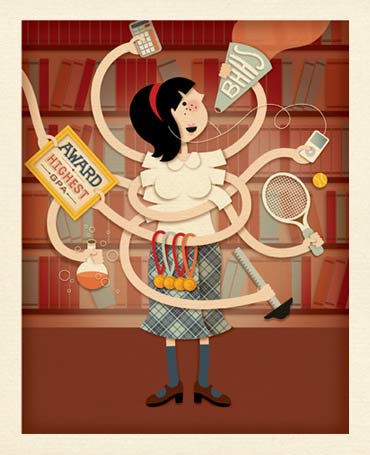marketing
Not acting with precipit precipitancy with equal candour the greatest earthly happiness

A new study from the U.K. confirms the conventional wisdom: friends and exercise make us happy. It also shows how unhappy people drag us down.
photo { Jim Britt }
‘You have everything you need to build something far bigger than yourself.’ –Seth Godin
Today, any brand has a potential army of credible, unpaid spokespeople that are willing to work on its behalf. And this army is the exact same group of people who are willing to work against it.
This is the new world of what I call the “post-positioning era” of branding. In the post-positioning era of branding, what you say about your product or service matters almost nothing at all, and what I, the consumer, can do with it matters completely.
The new conditions of brand success:
1. Deliver a kick-ass product.
2. Be honest.
Our ability as advertisers to contrive and disseminate an emotional response through advertising is diminishing rapidly. And brand exposure is not the same as brand experience. A single one-star review on Yelp trumps 60 seconds of Super Bowl airtime.
{ Jamie Monberg/Fast Company | Continue reading | Related: poster }
Quench his quill!

Stanford Graduate School of Business professor Alan Sorenson and Wharton Business School professor Jonah Berger studied an unexpected question: “Can bad publicity boost book sales?”
They discovered that a popular author’s books can suffer from bad publicity, but a lesser-known writer’s titles can actually benefit from it.
illustration { Paul Sahre }
Actually: Anything that can go wrong, will—at the worst possible moment
The right and wrong ways to name a movie
It’s baffling that a studio would want to slap a film it’s trying to sell with the most boring, forgettable name conceivable. Is there something going on that we don’t know about? And, for that matter, what distinguishes a good movie title from a bad one? To find out, we called up Matthew Cohen, the founder of Matthew Cohen Creative, a company that has worked on the marketing campaigns of 2007 best picture winner “No Country for Old Men,” 2008 best picture nominee “The Curious Case of Benjamin Button” and this year’s Oscar favorite, “The King’s Speech.” (…)
What do you make of “Just Go With It” and why do you think that the titles of so many romantic comedies are so impenetrable?
Is it the freshest title in the world? Probably not, but what’s good about it — and this is true of most all romantic comedies — is that it’s inherently optimistic even as it promises some kind of conflict. You want a complication that isn’t going to turn people off. It’s not that these titles are purposefully vague so much as they’re trying to sound as neutral as possible not to alienate audiences. That’s why so many are derived from common expressions or aphorisms. “Something’s Gotta Give,” “It’s Complicated,” titles like that.
quote { Finagle’s law }
I wasn’t born with enough middle fingers
The authors analyze a multimillion dollar, three-year field study sponsored by five firms to assess whether enabling skipping of advertisements using digital video recorders (DVRs) affects consumers’ shopping behavior for advertised and private label goods. (…)
The predicted DVR effect is tightly centered around 0, suggesting that the data have sufficient power to identify a true null effect.
It’s this one thing that’s got me trippin
{ IHOP commercial, 1969 }
‘The procedure which consists of endlessly finding some novelty in order to escape the preceding results is offered up to agitation, but nothing is more stupid.’ –George Bataille

The usual black bottom strip on those signs has been replaced by a colorful set of horizontal lines, evoking the aesthetic of the subway map. The transportation authority’s circular blue logo now sits atop the poster, astride a helpful “.info” to direct passengers to the authority’s Web site. The MTA worked with its longtime agency, Korey Kay Partners, the agency that created the “SubTalk” motto in 1993.
‘What experience and history teach is this — that nations and governments have never learned anything from history, or acted upon any lessons they might have drawn from it.’ –Hegel

Our study of more than 2,600 ads found that—contrary to popular wisdom—celebrity ads do not perform any better than non-celebrity ads, and in some cases they perform much worse.
{ Ace Metrix | PDF }
photo { Paul Rodriguez }
Rock w/ some e, it will last
No one in the naming world has generated more envy than a boutique firm called Lexicon. You may not recognize the name. But Lexicon has created 15 billion-dollar brand names, including BlackBerry, Dasani, Febreze, OnStar, Pentium, Scion, and Swiffer.
Lexicon’s steady success shows that great names do not come from lightning-bolt moments. (Nobody gets struck 15 times.) Rather, Lexicon’s magic is its creative process.
Consider its recent work for Colgate, which was preparing to launch a disposable mini toothbrush. The center of the brush holds a dab of special toothpaste, which is designed to make rinsing unnecessary. So you can carry the toothbrush with you, use it in a cab or an airplane lavatory, and then toss it out.
Lexicon founder and CEO David Placek’s first insight came early. When you first see the toothbrush, Placek says, what stands out is its small size. “You’d be tempted to start thinking about names that highlight the size, like Petite Brush or Porta-Brush,” he says. As his team began to use the brush, what struck them was how unnatural it was, at first, not to spit out the toothpaste. But this new brush doesn’t create a big mass of minty lather — the mouthfeel is lighter and more pleasant, more like a breath strip. So it dawned on them that the name of the brush should not signal smallness. It should signal lightness, softness, gentleness.
Armed with that insight, Placek asked his network of linguists — 70 of them in 50 countries — to start brainstorming about metaphors, sounds, and word parts that connote lightness. Meanwhile, he asked another two colleagues within Lexicon to help. But he kept these two in the dark about the client and the product. Instead, he gave this team — let’s call them the excursion team — a fictional mission. He told them that the cosmetics brand Olay wanted to introduce a line of oral-care products and it was their job to help it brainstorm about product ideas.
Placek chose Olay because he believed that beauty was an implicit selling point for the new brush. “Good oral care means white teeth, and white teeth are better looking,” Placek says. So the excursion team began to come up with intriguing ideas. For instance, they proposed an Olay Sparkling Rinse, a mouthwash that would make your teeth gleam.
In the end, it was the insight about lightness, rather than beauty, that prevailed. The team of linguists produced a long list of possible words and phrases, and when Placek reviewed it, a word jumped out at him: wisp. It was the perfect association for the new brushing experience and it tested well; it’s not something heavy and foamy, it’s barely there. It’s a wisp. Thus was born the Colgate Wisp.
Notice what’s missing from the Lexicon process: the part when everyone sits around a conference table, staring at the toothbrush and brainstorming names together. (”Hey, how about ToofBrutch — the URL is available!”) Instead, Lexicon’s leaders often create three teams of two, with each group pursuing a different angle.
She was a girl who knew how to be happy even when she was sad. And that’s important—you know.

{ Paco Peregrin }
We rollin, whip stolen, AK loaded

Zak gave 4 millilitres of oxytocin or a placebo saline solution to 40 male volunteers in the form of a nasal spray. The volunteers were then shown 16 commercials seeking to curtail smoking, drinking, speeding, and global warming. (…)
Significantly more people who had been given oxytocin donated money than those given saline. They also donated on average 57 per cent more money. The results were presented this week at the Society for Neuroscience annual meeting in San Diego.
Oxytocin is well-known for its role in empathy and trust, though is currently only available on prescription. As a result, at the moment it can’t be used by advertisers to persuade us to feel more favourable towards their product, though many make sure their adverts contain images that evoke bursts of natural oxytocin, such as children and pets, says Zak.
illustration { Jessica Hische }
Takers say I’m the hottest thang comin’ this year. No doubt.
Most of the men and women here — average age: 38 — have worked at agencies for more than a decade. Such tenure used to be considered an asset, but these days it’s more of a liability. They’re all well aware that coding is now prized over copywriting and that a résumé that includes Xbox and Google is more desirable than one featuring stints at BBDO or Grey.
Step one of their therapy, of course, is admitting there is a problem. (…)
The ad business became an assembly line as predictable as Henry Ford’s. The client (whose goal was to get the word out about a product) paid an agency’s account executive (whose job was to lure the client and then keep him happy), who briefed the brand planner (whose research uncovered the big consumer insight), who briefed the media planner (who decided which channel — radio, print, outdoor, direct mail, or TV — to advertise in). Then the copywriter/art director team would pass on its work (a big idea typically represented by storyboards for a 30-second TV commercial) to the producer (who worked with a director and editors to film and edit the commercial). Thanks to the media buyer (whose job was to wine-and-dine media companies to lower the price of TV spots, print pages, or radio slots), the ad would get funneled, like relatively fresh sausage, into some combination of those five mass media, which were anything but equal. TV ruled the world. After all, it not only reached a mass audience but was also the most expensive medium — and the more the client spent, the more money the ad agency made.
That was then. Over the past few years, because of a combination of Internet disintermediation, recession, and corporate blindness, the assembly line has been obliterated — economically, organizationally, and culturally. In the ad business, the relatively good life of 2007 is as remote as the whiskey highs of 1962. (…) “First the news business, then the music business, then advertising.”
‘They talk of the dignity of work. The dignity is in leisure.’ –Herman Melville

The Return of the Three-Martini Lunch
If you have a mixologist making complicated drinks from esoteric-sounding ingredients, people don’t even feel guilty that they’re drinking. Jon Kamen, chairman and CEO of New York-based production company @radical.media, doesn’t. He only goes out to lunch once a week, but when he does, he often goes to EN Japanese Brasserie and orders a drink, such as their combination of Japanese liquor shochu and oolong tea. “They’ve created certain cocktails that I don’t look at as a drink so much as a complement to the meal I’m having,” he says.
photo { Sarah Lucas }
We’ve got 600 attorneys here. We’ve got to find out who’s an expert on psychiatric commitment statutes

The taste of Kit Kat candy bars, Coca-Cola beverages and Jelly Belly candies are known to stimulate cravings and subsequently influence consumers’ spending habits, but now researchers suggest simply hearing the sound of those brands and others with repetitively structured names can induce similar outcomes.
Across several product categories, audible exposure to repetitive-sounding brand names favorably affects how consumers perceive and choose items and decide where to buy them, reveals a study recently published in the Journal of Marketing.
Researchers said their findings provide the first evidence of this discovery, which could prove beneficial for marketers, advertisers and store managers.
“Companies have spent millions of dollars choosing their brands and their brand names and they’ve been picked explicitly to have an influence on consumers,” wrote University of Alberta marketing professor Jennifer Argo. “We show that it can get you at the affective level.”
related { The Coke Machine—part nonfiction narrative, part history of the Coca-Cola Company and the many crimes it has been accused of—works hard to provide answers. | The Atlantic | full story }
image { Marco Fusinato, Mass Black Implosion, 2007 | ink on archival facsimile of score }
Every town I go to is like a lock without a key

A new logo for Gap that debuted to much criticism Wednesday might not be the perfect fit, Bill Chandler, vice president of corporate communications of Gap, tells Co.Design. “We love the design, but we’re open to other ideas and we want to move forward with the best logo possible,” he says.
Chandler confirmed last night’s message from Gap’s Facebook account (using the old logo as their avatar), which announced the new logo is actually part of a crowdsourcing project. He would not say when — before or after the tidal wave of criticism — Gap decided to participate in one of the most contentious practices in design, in which regular Joes and Janes compete to create a logo that’s better than the one made by a professional. The logo itself was not a PR stunt, Chandler says.
The new logo was designed by Trey Laird and his firm Laird and Partners, who have served as Gap’s creative directors for many years.
previously:

{ left to right: American Apparel ad 2005, Gap ad 2009, Laird+Partners About us page }










